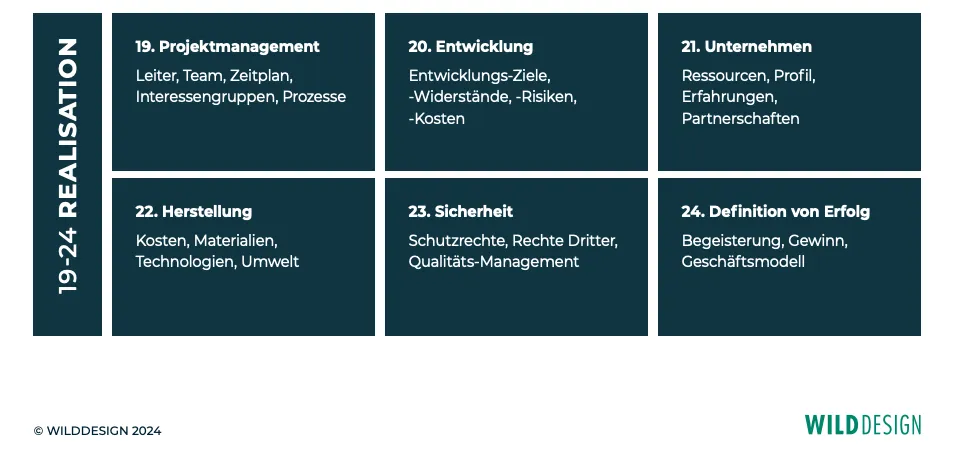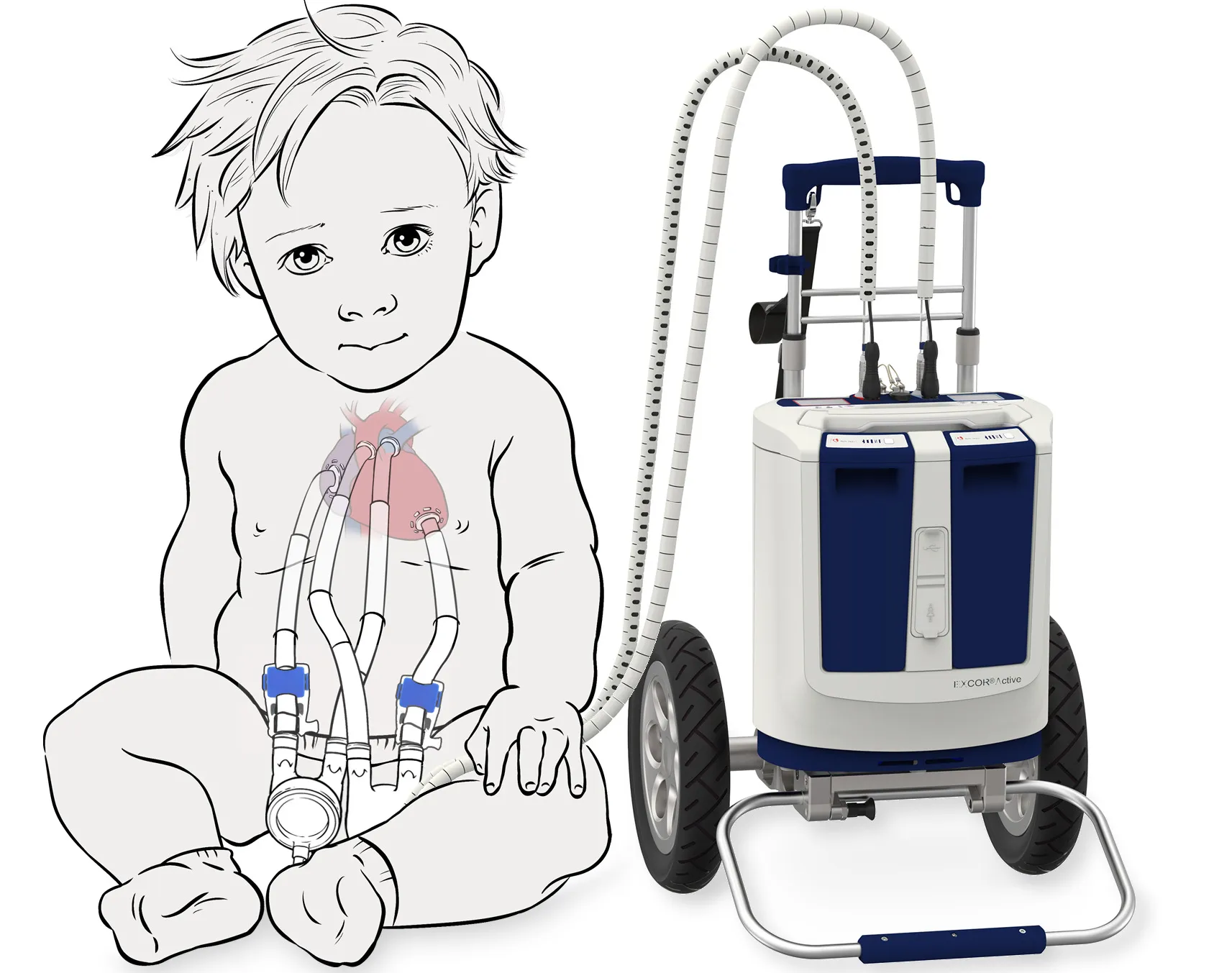Expertise
The 24 design factors - a holistic design methodology
Two years ago, I read the book "The Checklist Manifesto - how to get things right" by Atul Gawande (which I can only recommend to anyone). I've actually always been fond of the checklist as a concept, because when the going gets tough, in the pilot's cockpit in the event of depressurization or in the operating theatre in the event of cardiac arrest, a checklist is usually the tool of choice.
And aren't design projects also "hard on hard"? Even if human lives are not directly at stake, an enormous amount depends on a single development. Success or loss - of money, jobs and, in our field of medical device design, even indirectly the fate of patients.
Making mistakes to harvest questions
For years (almost 24 years), we collected every important question that came our way in design development, questions that were behind mistakes, questions that were asked too late or that simply got to the heart of what we couldn't grasp before. Our list grew longer and longer and we were actually quite happy with it. At the same time, however, we became increasingly reluctant to really get to grips with it, as overstimulation and information overload is the phenomenon of our time. While reading Atul Gawande's book I realized that it is particularly important to make the essence of this knowledge accessible and to organize it clearly.
What would it be like if we had all the important questions in front of us? If we knew that we hadn't forgotten anything that could later lead to expensive changes or even a flop or even a flop. This was the motivation behind the invention of the 24 design factors methodology.
Get to know each of the 24 design factors - on our interactive poster "24 design factors".
And here I explain how it works.
Works from the product ...
As product designers, our questioning starts with the product, but it doesn't end there. The brand that stands or should stand behind the product is at least as important to us. The value of the product can therefore be extremely different, because it is rarely the material value that characterizes a product. These two domains, the product and the brand, form the backbone of the 24 design factors. The third area is realization, which contains all the questions relating to implementation.

... also works from the brand perspective
Although developed from the perspective of a product designer, the 24 design factors are also fully applicable to brand projects. In fact, it is very useful to think of the object of a branding task as a product. Even if it is a software interface or a flyer: the questions "What is the purpose and what is the product environment?" make perfect sense here too.

A universal tool in development
The 24 design factors are not a process, but a condensed checklist for holistic design. They can be used at any point in the development process to focus or broaden the view, as required. They have a special function in the initial phase of projects, during the briefing. The aim here is to focus on what is important and not get lost in the details. In addition, the definition of the task should leave enough room for creativity, prioritization and flexible handling.
Rank 24 times in importance
The 24 factors are always all applicable, but they are never of equal relevance and priority. It is therefore necessary to weight the individual factors. This is where the developer's experience comes into play, because otherwise the wrong priorities will be set. The special value lies in the closed form and the clear structure. If you work with the 24 design factors, you will soon know that interaction is at the top right and production at the bottom left - on the poster.

24 times the basis for creative interaction
The 24 design factors support the open discussion of all participants. In the briefing, it has proven to be important that the creative takes the initiative and leads with questions. I always think of the briefing as an interview with a well-prepared professional journalist who uses razor-sharp questions to tease out the story. It's no good if someone spends hours explaining their world to me, I have to actively question it myself. This is the only way to start a creative process and a productive discussion between all members of the development team.
The value of a closed system
The 24 design factors form a closed system which has the great advantage that it does not need to be constantly expanded. Because it allows the ideal balance of abstraction and concretization, it offers support to the experienced expert as well as to the less experienced or the novice in development processes. The closed system gives the designer the good feeling that nothing essential has been forgotten and this security is also transferred to our customers. We have had the 24 design factors printed as DIN A1 posters and there are illustrated question cards for the more in-depth questions.
The 24 design factors in action
Our customers in particular love the 24 design factors because they are so compact. Some even like them so much that they frame each of the 24 design factor cards and hang them on the wall. But our DIN A1 poster can also be seen more and more often on our customers' walls within sight of their desks.
The 24 design factors have been in use in their current form for around a year and now form the basis for all our projects. We can now process more complex contexts and consciously set priorities. We are particularly proud that the method is already being used by third parties in consulting practice, namely in the TIMEWAVER expert system. This is used to support strategic management consultancies in decision-making and the 24 design factors with the underlying question lists form the Product & Brand module.
Why 24?
Last but not least - why 24? Why a fixed number at all? This may already be clear from the above. Precisely because it is fixed. This is where mathematics and aesthetics come very close together, as with the golden ratio (which, incidentally, will soon experience a renaissance). Of course, at the beginning there is a certain amount of information that needs to be structured. But whether it's 19, 23 or 26 - does it matter? I don't think so. 24 provides a fixed framework and, thanks to the matrix form, a closed shape that can be logically structured because it can be divided by 2, 3 and 4 and by a dozen. The effect is fundamental and has an immediate positive impact on the identification and trustworthiness of this tool.
04 Tips from the expert
- Discover the 24 design factors
Use the holistic checklist to make sure you don't overlook anything in your design process. Get started now with our interactive poster. - Set clear priorities
Weight the relevance of the individual design factors for your project. This allows you to focus your resources effectively and avoid costly mistakes. - Encourage creative collaboration
Use the 24 design factors as a common tool to support open and productive interaction in your team. Start the creative process with the right questions! - Integrate brand and product
Consideryour development from the perspective of both product design and branding. A strong connection between product and brand increases the value and recognizability of your product.
Frequently asked questions





